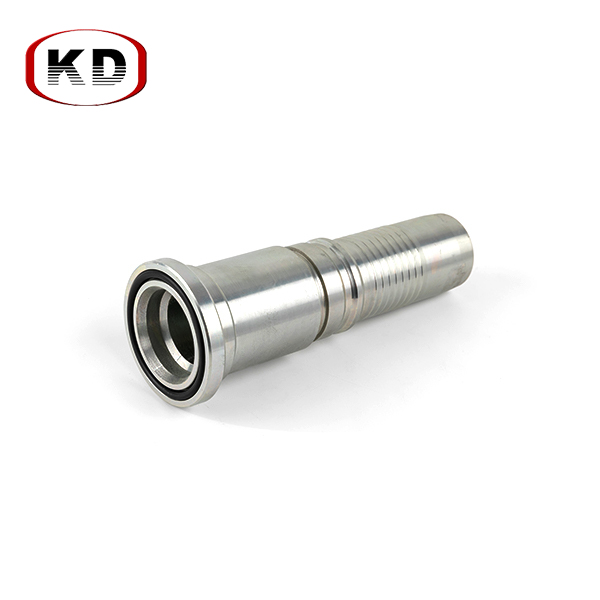Many years of foreign trade experience.
Strong production capacity, and massive stock to make sure the delivery time.
ISO quality process to make sure every piece qualifies.
One-to-one service, OEM service, provides alternative efficient solutions.

 By Admin
By Admin
When installing hydraulic nipples to ensure proper sealing and connection integrity, several factors should be carefully considered:
Cleanliness: Before installation, it's crucial to ensure that both the hydraulic nipple and the mating surface are impeccably clean. Any presence of dirt, debris, or contaminants can severely compromise the integrity of the seal. Use appropriate cleaning agents, such as isopropyl alcohol or other solvents compatible with the hydraulic system materials, to remove any foreign particles. Utilize lint-free cloths or wipes to prevent introducing new contaminants during the cleaning process. Consider using compressed air to blow out any remaining particles from the threads and sealing surfaces.
Thread Sealant: Applying the appropriate thread sealant or tape is a critical step in ensuring a leak-proof connection. For tapered threads, which rely on thread deformation to create a seal, a thread sealant like PTFE (polytetrafluoroethylene) tape or liquid thread sealant can fill the voids between threads and enhance the seal. When using PTFE tape, wrap it around the threads in the direction of tightening to prevent unraveling during installation. For liquid thread sealants, ensure even application on the threads. Verify that the sealant used is compatible with the hydraulic fluid and does not degrade over time.
Tightening Torque: Achieving the correct tightening torque is paramount to ensure a secure and reliable connection without damaging the components. Over-tightening can deform threads and seals, while under-tightening can result in loose connections and leaks. Refer to our specifications for the recommended torque values for the specific hydraulic nipple and application. Use a calibrated torque wrench to apply the precise torque. Regularly calibrate the torque wrench to maintain accuracy and reliability.
Orientation: Proper orientation of the hydraulic nipple during installation is crucial to maintain system efficiency and performance. Incorrect orientation can cause flow restrictions, turbulence, or pressure drops. Follow the installation guidelines and diagrams provided by the manufacturer to ensure the nipple is oriented correctly in relation to the hydraulic system's flow direction. In systems with directional flow, ensure that the nipple aligns with the intended flow path to avoid adverse effects on system operation.
Seal Integrity: Inspect the sealing surfaces of both the hydraulic nipple and the mating component for any signs of damage, wear, or irregularities before installation. Even minor imperfections can compromise the seal and lead to leaks. Use magnification tools if necessary to closely examine the surfaces. Replace any components that exhibit defects such as scratches, dents, or corrosion to maintain the integrity of the hydraulic connection. Check for uniformity in the sealing surfaces to ensure a consistent and reliable seal.
SAE FLangs 3000 PSI Reliable Sealing Interkock Fittings

Engineered to withstand pressures of up to 3000 pounds per square inch (PSI), those SAE FLangs 3000 PSI Reliable Sealing Interkock Fittings offer a secure and leak-resistant connection in annoying business packages. The interlock layout guarantees a reliable seal, preventing hydraulic fluid leaks that may compromise device performance and safety. The fittings are created from splendid materials, regularly proposing corrosion-resistant alloys or durable metal, enhancing their sturdiness and overall performance even in harsh running environments.